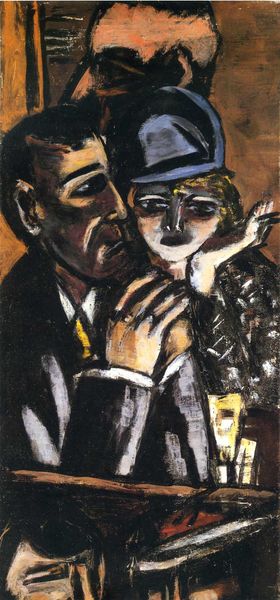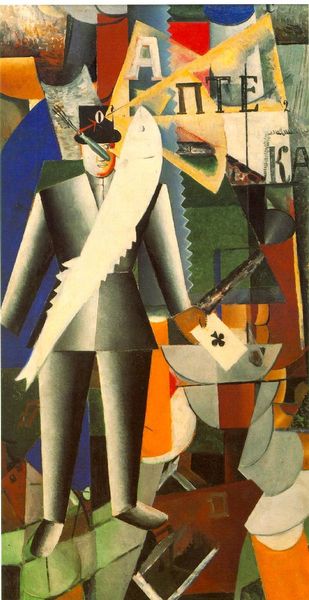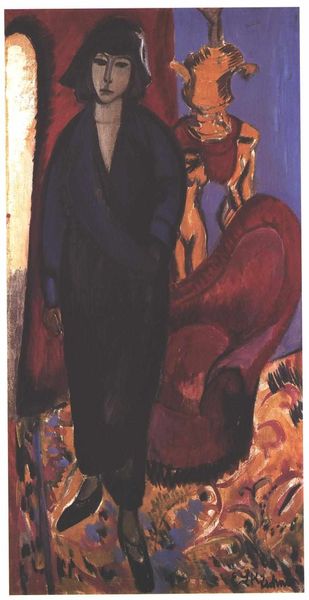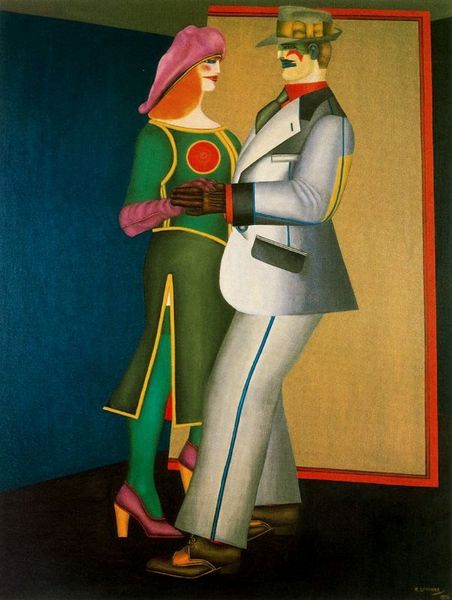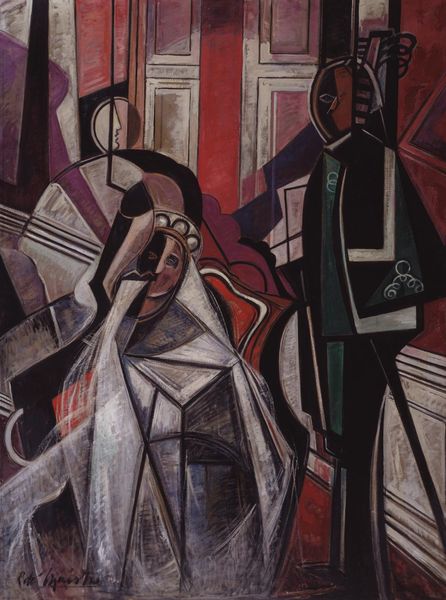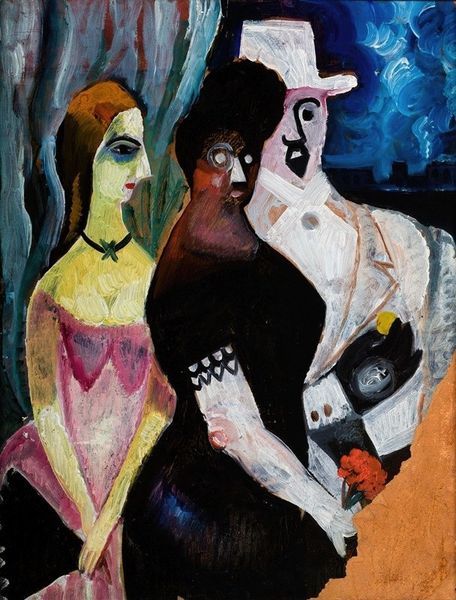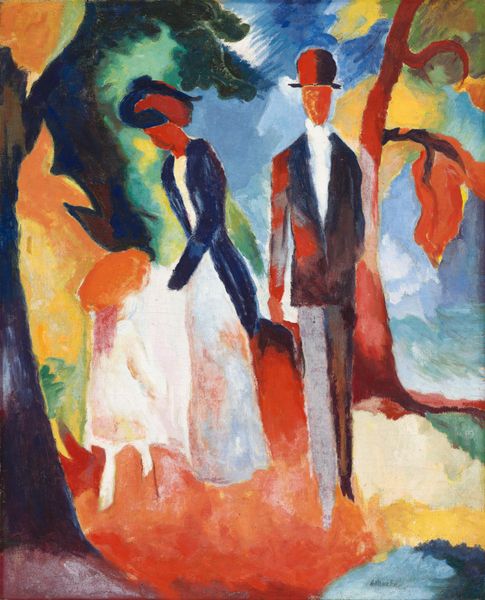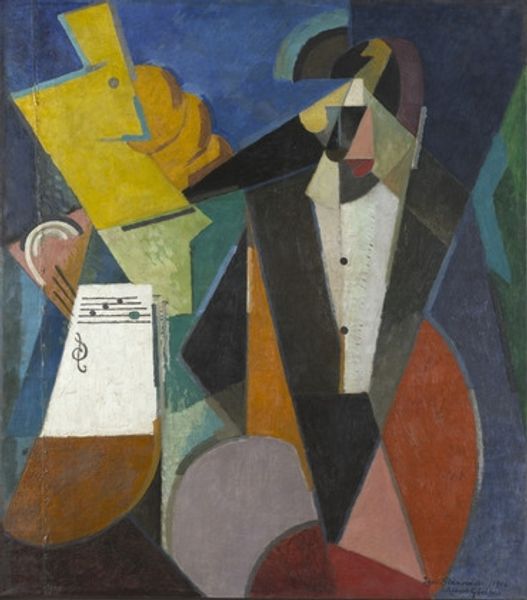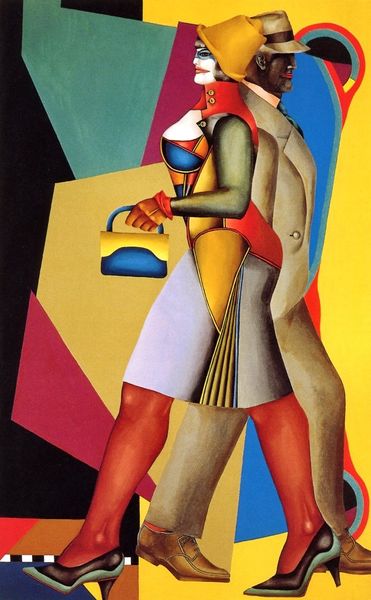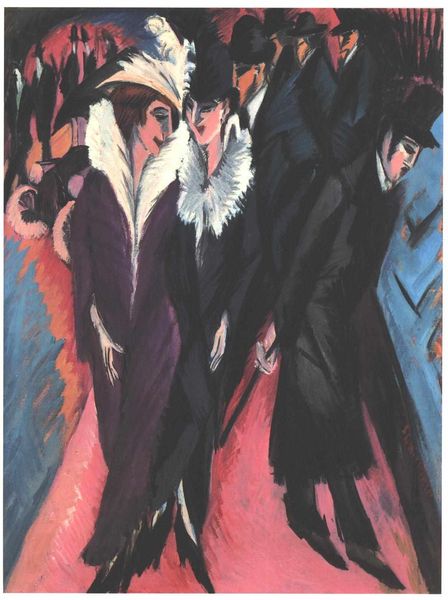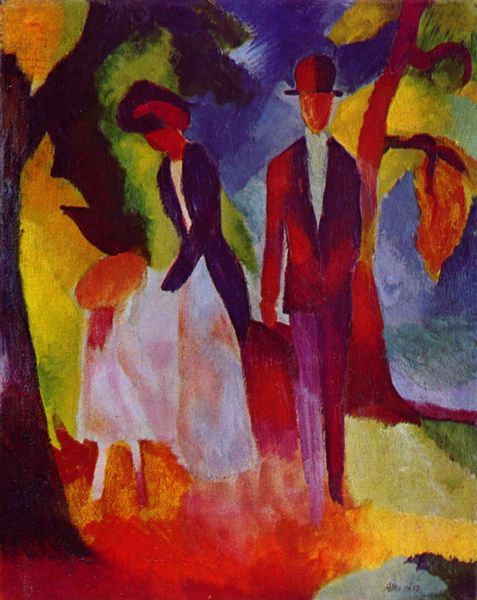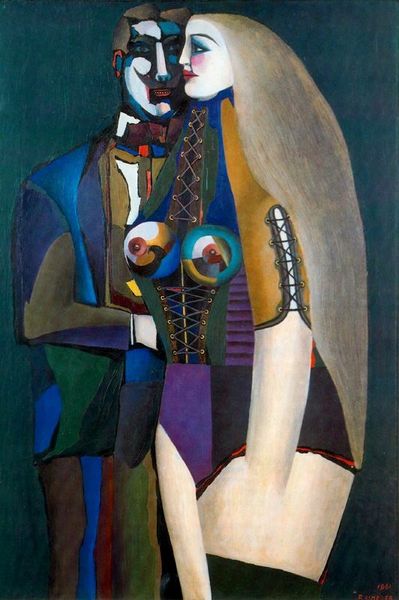
oil-paint
#
portrait
#
narrative-art
#
oil-paint
#
german-expressionism
#
oil painting
#
expressionism
#
genre-painting
Copyright: Public domain
Curator: Painted in 1925, Max Beckmann’s oil on canvas, titled "The Artist and his Wife," presents us with an intriguing, albeit somewhat unsettling, portrait. Editor: My immediate reaction is that it’s… strange. The colors are muted, almost melancholic, and the figures possess a peculiar stiffness. It's captivating, but undeniably unsettling. Curator: I agree, the tonality establishes an ambivalent mood. The formal qualities are quite compelling when viewed through a German Expressionist lens. The artist’s emphasis on line, especially in the contouring of the faces and garments, gives the composition an incredible underlying structure, as does the geometric fracturing of the subjects. Editor: Those contours, though, contribute to the stark, almost mask-like faces. The woman's hat, reminiscent of a naval officer's, coupled with the wooden toy horse, suggest a longing for travel or perhaps a sense of detachment from reality. They evoke theatrical and possibly maritime archetypes. Curator: Notice, too, the use of perspective. Beckmann eschews traditional methods, opting for a compressed space that pushes the figures forward, intensifying their presence, particularly through those powerfully distorted hands and limbs. Editor: And the horse! A child’s toy rendered with such starkness takes on a new significance. Horses often symbolize power and freedom. Does the diminutive size represent a constrained liberty, or perhaps a commentary on bourgeois pursuits, since this painting was conceived and produced during the inter-war period of economic depression and mass unemployment? Curator: Such conjectures find validation in Expressionism's concern with emotional reality versus superficial appearance. Beckmann sought to capture an inner psychological truth through formal manipulations. It’s quite brilliantly done, in my opinion, though far from easily accessible in meaning. Editor: It leaves us pondering the role of play and performance in relationships. What are the figures portraying and what roles might the artist be suggesting they fulfill? I do wonder. Curator: Ultimately, the work embodies a visual distillation of emotion and perception that is evocative in its compositional techniques, to use formalism as my sole and necessary guide, of course. Editor: And in this canvas we also glimpse the rich history of symbols and the enduring power of objects, be they grand steeds or a child's simple toy, in mirroring the complexities of human existence.
Comments
No comments
Be the first to comment and join the conversation on the ultimate creative platform.
